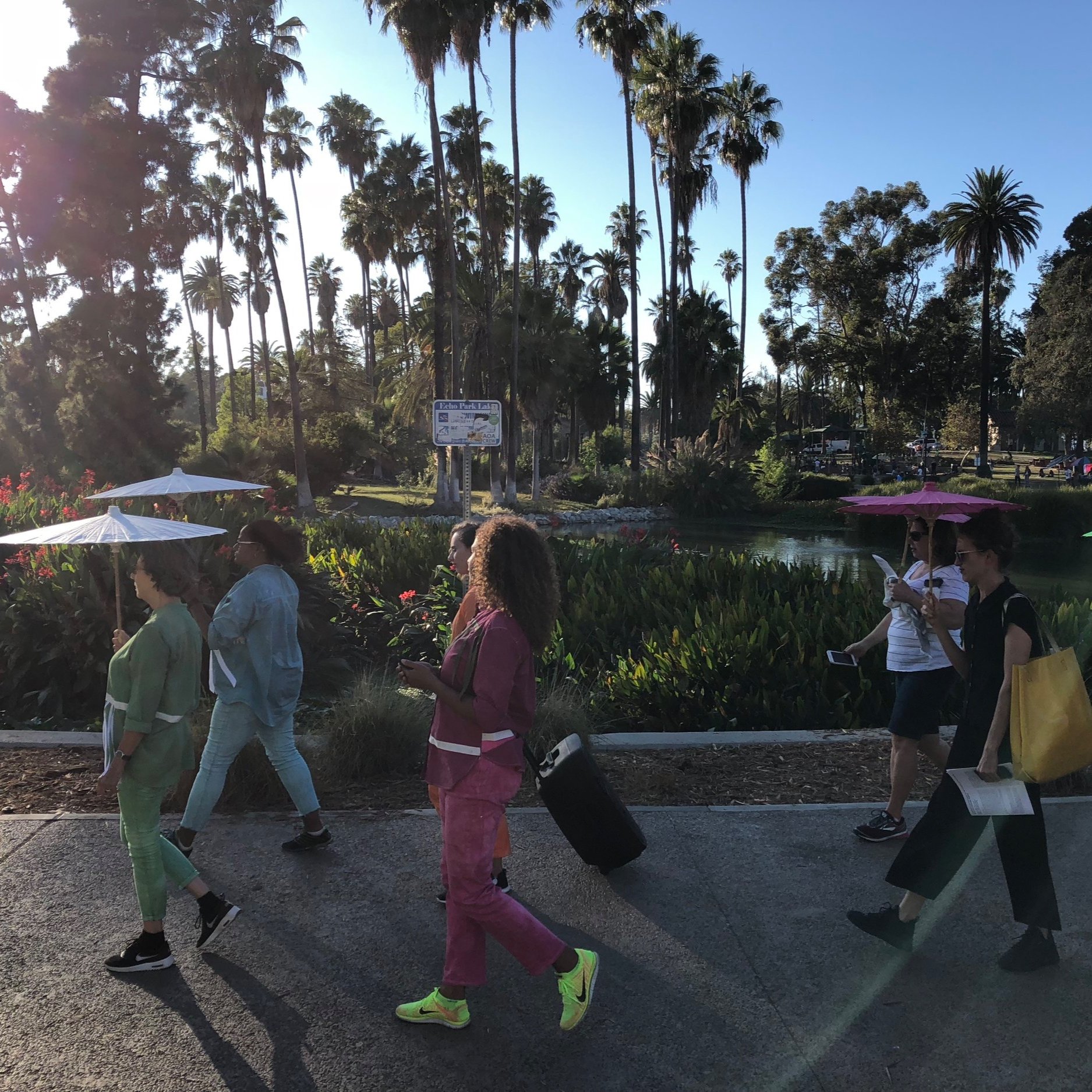RESEARCH
The Museum on the Move: Race, Coloniality, and Performance
The Museum on the Move: Race, Coloniality, and Performance argues that in the wake of muséal critiques grounded in embodiment and relationality and a curatorial embrace of performance-based work, performance studies is ideally situated to respond to calls for museum reform. The Museum on the Move engages a series of performances that happened in contemporary art museums and focuses on how their scores help reveal and re-imagine museums’ structural logics. My analysis takes seriously the potential of small-scale and fleeting gestures within each performance to question museums’ stability, itself premised upon asserting systems of colonial and imperial rule and capitalist production as, likewise, stable and impermeable.
I coin the term aesthetic transiency to theorize how such gestures reveal these histories and, further, how they help imagine institutional dismantlement. Informed by Black Feminist Studies, post-colonial thought, and queer theory, my theorization draws upon concepts like fugitivity, dark sousveillance, and queer futurity to articulate aesthetic transiency. Fundamentally, The Museum on the Move asserts the necessity of analyzing visual cultural institutions through gendered, raced, classed, and colonial social politics.
Banner photo by Jason Hirata.
a haunted botany
The multi-sited collaborative performance project, supported by the MAP Fund, asks what happens when we examine colonialism through human relationships with plants. It begins from the understanding that colonial projects violently imposed human-centric (and human is distinctly parsed through European Enlightenment discourses) states of being and knowing. Through performance and archival research, a haunted botany explores a dialectic between the historic violence and trauma of colonization and the pleasure and desire engendered through plants, focusing on accounts of queer intimacy facilitated through inter-species relationships thatexceeded the bounds of colonial containment and scientific epistemologies.
By addressing plant life as a central agent of colonial expansion, a haunted botany reads hegemonic desire against the grain to think about how specific plants informed colonial assumptions of and relationships to certain places and people. The project argues that a complex and often violent matrix of desire underpins a critical understanding of colonial trajectories, botanical histories, and material relations. a haunted botany is a collaboration with Sister James.
Learn more here.



